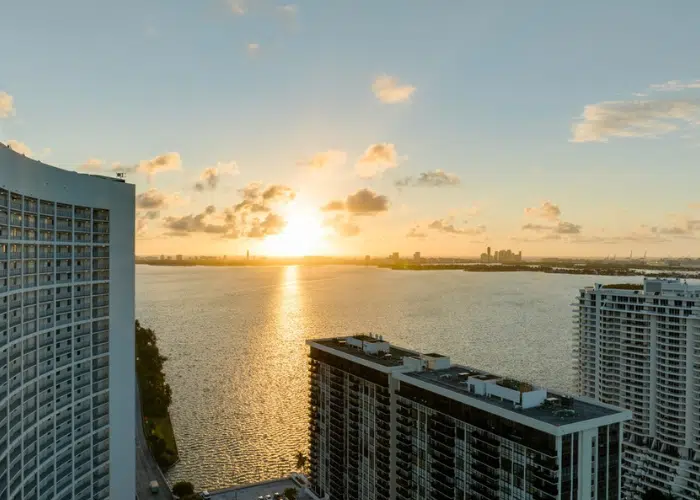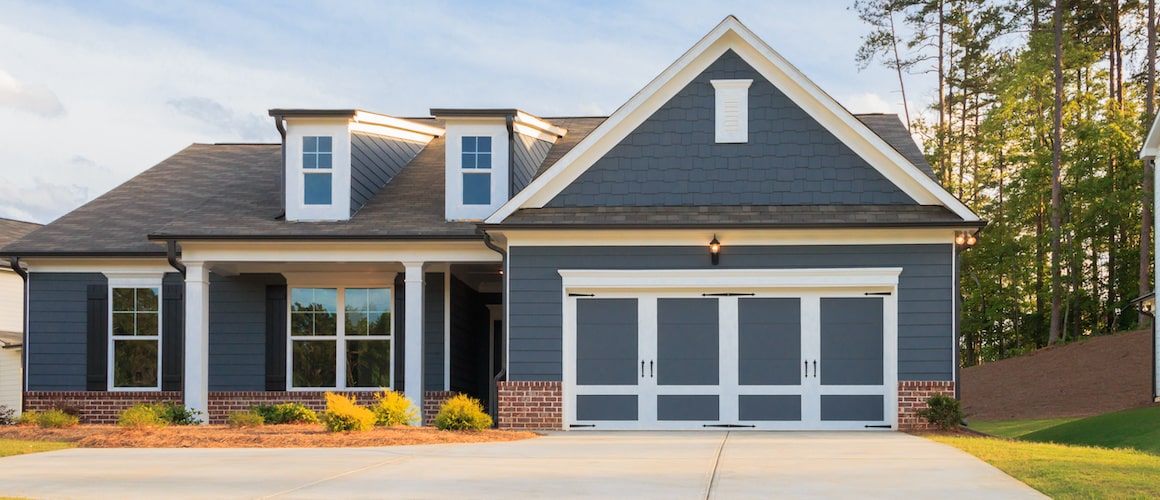5 Critical Trends Reshaping South Florida's Affordable Housing Landscape
The Evolving Landscape of Housing Accessibility in South Florida
South Florida's affordable housing crisis continues to demand innovative solutions that balance accessibility, cost, and design considerations. As residents face the highest rent burden nationwide, developers, financial institutions, and local governments are implementing creative approaches to address these challenges. From mixed-income developments incorporating luxury amenities to specialized loan programs targeting underserved communities, the region is witnessing transformative initiatives that could reshape housing accessibility for years to come.
Recent data shows that over 57% of renters in the Miami metropolitan area are considered cost-burdened, spending more than 30% of their income on housing. This economic pressure has forced municipalities to reconsider traditional housing models and explore alternative frameworks that can accommodate diverse income levels while maintaining community quality. The following five trends highlight the most significant developments currently reshaping South Florida's approach to affordable housing.
Luxury Meets Affordability: The Rise of Mixed-Income Developments
A new paradigm is emerging in Fort Lauderdale's housing market with developments like The Era, which challenges conventional notions about affordable housing aesthetics and amenities. This project exemplifies a growing trend where workforce housing incorporates premium features typically associated with luxury developments.
By designating 40% of units for workforce housing near premium oceanfront locations, developers are creating economically diverse communities that avoid the stigma historically associated with affordable housing. These mixed-income models rely on sophisticated financing structures that combine private investment with public subsidies.
"The old model of segregating affordable housing has proven ineffective," explains urban planning expert Dr. Sophia Rodriguez. "These integrated developments create healthier communities while providing essential housing for middle-income professionals like teachers, healthcare workers, and public safety personnel who otherwise couldn't afford to live where they work."
Such developments typically leverage tax credits, density bonuses, and public-private partnerships to offset construction costs while maintaining quality standards. With construction costs approximately 18% higher than the national average in South Florida, these financial mechanisms have become essential to project viability.
Banking Innovation: Breaking Down Homeownership Barriers
In West Little River, a groundbreaking initiative by OneUnited Bank, the nation's largest Black-owned banking institution, is addressing one of the most significant obstacles to homeownership: the down payment requirement. Their program offers forgivable loans up to $50,000 for qualified first-time homebuyers, targeting communities traditionally underserved by conventional mortgage lenders.
This initiative represents a shift in how financial institutions approach affordable housing, focusing on removing barriers to entry rather than simply offering lower interest rates. Program participants must complete financial literacy courses and maintain residency requirements, but the structure eliminates the substantial upfront costs that prevent many middle-income families from purchasing homes.
The program has already assisted over 75 families in achieving homeownership since its January launch. According to housing economists, such initiatives could increase minority homeownership rates by up to 12% in targeted neighborhoods over the next five years if similar programs expand throughout the region.
The Funding Dilemma: Navigating Public Resource Allocation
As South Florida municipalities grapple with implementing Florida's statewide camping ban, tensions regarding resource allocation have emerged between local governments and service providers. The dispute between Camillus House, one of Miami-Dade's largest shelters, and county officials highlights the complex financial challenges facing homeless service infrastructure.
Since October 2024, Camillus House has reduced its emergency shelter capacity by 75%, citing disagreements with Miami-Dade County and the City of Miami regarding the nightly cost of emergency beds. This reduction comes at a critical time when demand for emergency shelter has increased by approximately 23% year-over-year.
Similarly, Miami Beach's decision to halt voting on a homeless tax has resulted in a $10 million funding gap from Miami-Dade County. These funding disputes illustrate how financial considerations often complicate even well-intentioned housing initiatives and reveal the need for sustainable funding models that can weather political changes.
"The ongoing disputes regarding shelter funding reflect a broader challenge in establishing sustainable financial frameworks for affordable housing programs," notes social policy analyst Maria Hernandez. "Without consistent, dedicated funding streams, even the most promising initiatives remain vulnerable to budgetary pressures."
Downtown Revitalization: Hollywood's Housing Evolution
Hollywood's downtown area is experiencing a transformation as new apartment developments like Soleste Hollywood Blvd emerge to address housing demands. This urban core revitalization represents a strategic approach to increasing housing density in areas with existing infrastructure and amenities.
While these developments add much-needed housing units to the market, questions persist regarding their affordability and potential impact on existing residents. Current data indicates that only about 17% of new downtown units fall within affordability thresholds for median-income households in Broward County.
City officials have implemented incentives such as tax abatements and density bonuses for developers who include affordable units in their projects. These measures aim to create economically diverse communities while revitalizing urban cores, though housing advocates argue these incentives often produce fewer affordable units than needed to address the scale of the housing shortage.
The downtown development strategy also aligns with sustainability goals by reducing commute times and creating walkable communities. Residents in these developments typically drive 23% fewer miles annually compared to those in suburban developments, according to transportation studies.
Workforce Housing Solutions: Addressing the "Missing Middle"
The Era development in Fort Lauderdale exemplifies an emerging focus on workforce housing—units targeted at middle-income professionals who earn too much to qualify for traditional affordable housing programs but not enough to afford market-rate housing in areas near their workplaces.
This "missing middle" housing crisis has particularly affected essential workers, with studies showing that over 68% of first responders and educators in South Florida commute more than 30 minutes to work due to housing affordability issues.
Innovative approaches include set-asides specifically for certain professions, employer-assisted housing programs where major institutions subsidize employee housing costs, and community land trusts that maintain affordability by separating land ownership from building ownership.
"The workforce housing challenge requires us to reconsider fundamental assumptions about housing development," explains real estate economist Jonathan Taylor. "By creating specific pathways for middle-income professionals to access housing near employment centers, we can strengthen community resilience and economic stability."
Insights: Addressing Common Questions About South Florida's Housing Market
How does mixed-income housing benefit communities beyond providing affordable units?
Mixed-income developments reduce economic segregation, create more diverse neighborhoods, and ensure that essential workers can live near their workplaces. Research shows these communities typically experience lower crime rates, better educational outcomes, and stronger local economies compared to areas with concentrated poverty or wealth.
Why are forgivable loan programs more effective than traditional down payment assistance?
Forgivable loans eliminate the psychological barrier of additional debt while providing immediate equity to new homeowners. Traditional assistance programs often require repayment, which can discourage participation and limit wealth-building potential, particularly in historically underserved communities.
What makes urban core housing development more sustainable than suburban expansion?
Downtown housing utilizes existing infrastructure, reduces transportation emissions, supports local businesses, and preserves undeveloped land. Residents of urban cores typically have 31% smaller carbon footprints compared to suburban dwellers due to reduced car dependency and more efficient building designs.
How can South Florida address the growing disconnect between housing costs and local wages?
A multi-faceted approach is essential, including wage growth initiatives, expanded rental assistance programs, inclusionary zoning requirements for new developments, and dedicated housing trust funds with consistent revenue sources. Communities that have implemented comprehensive strategies have shown up to 15% improvements in housing affordability indexes within three years.
What role should the private sector play in addressing affordable housing challenges?
The private sector brings essential capital, development expertise, and operational efficiency to housing challenges. The most successful models create clear financial incentives for private participation while establishing accountability measures that ensure community benefit. Public-private partnerships that share both risk and reward have produced 37% more affordable units compared to purely public or purely private approaches.













